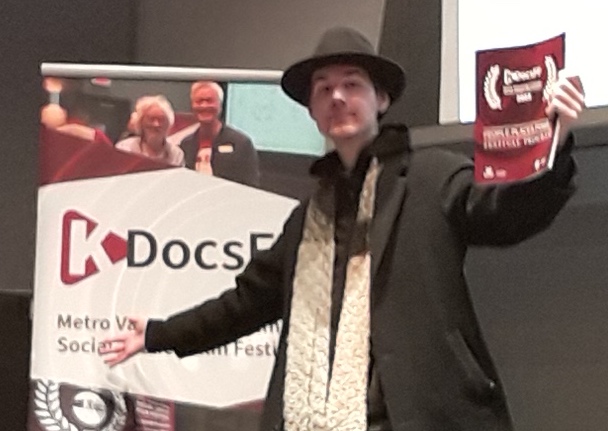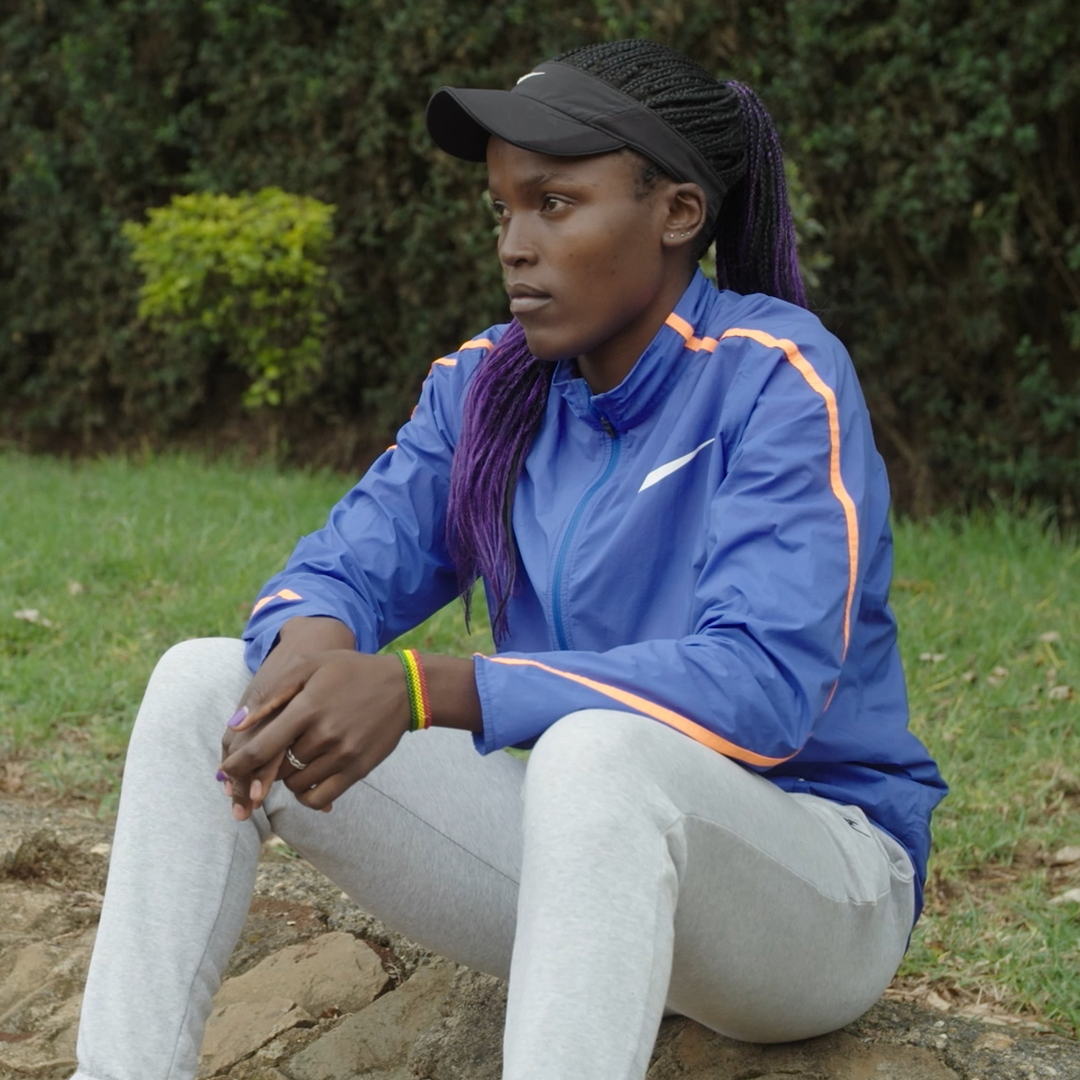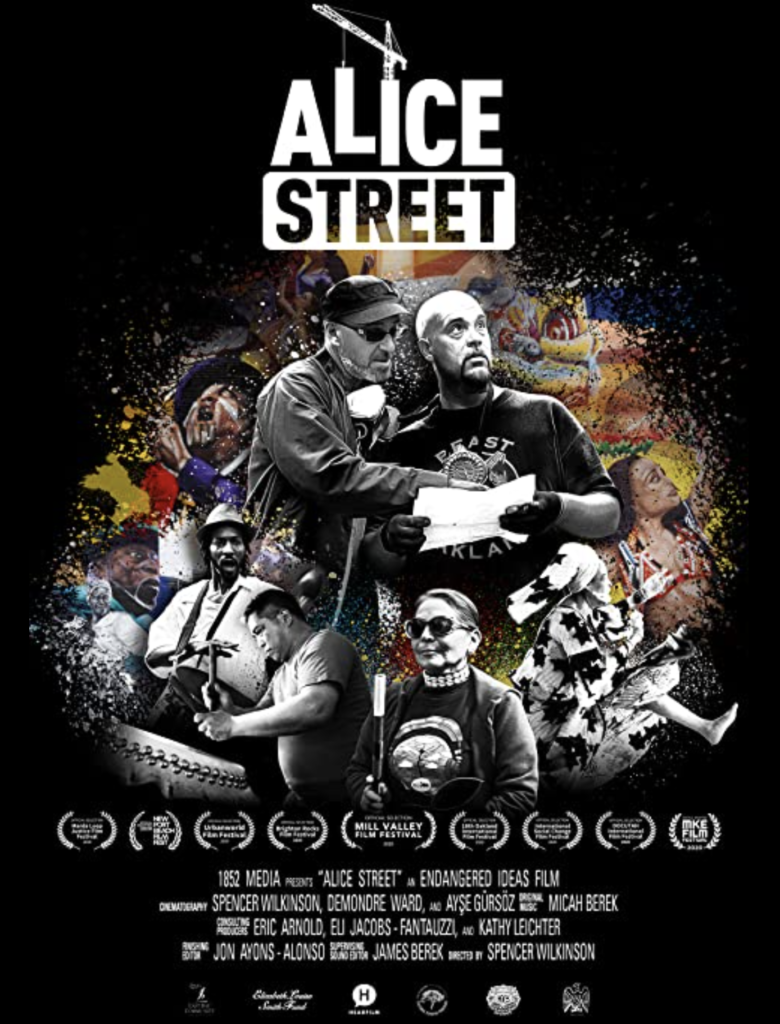There are many problems in this world, and many ways to address them. You could blatantly ignore them, and go on about your life without knowing they’re there. Or you could learn about them and hopefully do your part in making the world somewhat of a better place. Another suggestion is petty revenge quests, but they’re not always worth it. One way of spreading awareness of these problems that not everyone knows about (sadly) is through documentaries. I LOVE documentaries, they teach you so much that you never knew about, and you don’t have to be watching to learn this stuff, you could be making a documentary, they’re relatively easy if you know where and what to research. Vancouver is notorious for film festivals, and lots of them have documentaries to the point of some of them even having documentaries be their main focus. And one of those festivals is KDOCSFF, a Social Justice Film Festival where all the documentaries on the biggest issues in the world, discrimination, environmental harms, and so much more. I have to give a shoutout to Janice Morris for hosting this amazing event, and hooking me up with some comp tix to some amazing screeners, the rest of the team gets shoutouts as well, including the volunteers, especially Katja DeBock from NFB, and everyone who submitted. Now since I couldn’t watch everything (two theatres AND the fact I was doing film set work) here are some highlights from this year’s festival.
Opening/Welcome
Nothing welcomes guests better than some welcoming speeches. Starting off with Janice Morris, and then we got treated to one by Bob D’Eith who spoke in a vlog style speech, there was also a heartfelt heartbeat song by an Indigenous musician who told us our purpose and lifted my spirit, and then the director of the very first film, Alex Winter who said talking about problems is what helps with acceptance. Now on to the first film of the festival.
The Youtube Effect
Ah, Youtube. Once a place where people would upload their own entertainment, post vlogs, publish copyrighted content, or even use Windows Movie Maker to make no-budget lyric videos. Those were the days. I remember I had a channel on there for entertainment once. Managed to last over a decade. So you’ve probably figured out what this one is about. I’m going to go into further detail anyway. The Youtube Effect covers the origin of Youtube, How it impacted the Internet, what it’s all about, and how big problems arose, like conspiracies, recommended videos, what the algorithm did to summon haters, and even further dangerous stuff like PG-13 material in the Youtube Kids section, and the worst people on Youtube with the ugliest mugs I had to deal with watching. Maybe this is why I don’t use Youtube often. The film was eye-opening, and it makes me glad I stick to the arts and entertainment side of things, and thankfully my opinion hasn’t gotten me some serious disrespect. At least not yet.
Backlash: Misogyny
After the first film, we got another that focused on the incredibly horrible discrimination women face. Before that, Amanda Todd’s mother Carol opened up with a speech revealing quite a back story. Then for the doc, we got more women talking about their experiences, Laura Boldrini got attacked when she entered the political system in Italy, Laurence Gratton and her classmates got harassed online for years by one particular guy in their class and he got away with it too, Kiah Morris also got into politics and dealt with severe threats from right-wing extremists, and Marion Seclin got over 40,000 sexist messages just from being a YouTuber. It’s amazing what the simply minded men do- oh wait, no it isn’t. It’s horrible. Defamation, harassment, sextortion, rape/death threats. I know the pain of experiencing these things and it makes me truly feel for the women who deal with it. Which is why I don’t harass anyone myself or make death threats. The documentary was thrilling and showed me an awful lot. The Q&A that followed afterwards seemed more like a discussion with the audience since everyone who had a question also had a statement. But they talked about the importance of online safety, and how more of the youth understands the problems face which makes them want to deal with it and erase it from existence.
Opening Night Reception
Not much I can say except it had a banquet of lots of delicious food. There were mini-donuts, cookies, bread, cheese cubes, fruits, and so much I consumed all I could. It’s a good thing too, I hadn’t eaten much all day, and my sense of taste was mildly affected, but I could at least taste the food and it was good. And there were a lot of people chatting. I don’t know why, but I didn’t quite know anybody at this one. Weird.
Focus on Latin America
A showcase of two films showing problems in other countries, MC’ed by Kim McGill, who managed Community Engagement and Major Events at Kwantlen University. First was The Cartel Project, where a big problem to be addressed is the dangers within Mexico. We’re talking about drugs, weapons, and how so many journalists got killed out there. Journalists from other countries featured in this doc told their perspectives on the issues at hand, studied how drug cartels worked, and joined forces to bring up the drug issue the best they can. This was also an interesting story about the death of Regina Martinez. This whole thing was dark, chilling, and kind of scary for some people who ended up having to leave early. I don’t blame them. As a journalist myself, I don’t think it’s safe for me to go to Mexico. Maybe I should consider a career change. Next came, The Territory that talked about a BIG land issue within a BIG LAND. Welcome to the Jungle. The Amazon, to be specific. Living around and along the Amazon are villages of Brazillians who are known as the Uru-Eu-Wau-Wau people. You’d think they’d be living calm lives with all the trees they’re around but they deal with issues like other villages trespassing and people accessing their lands. Other issues that are addressed include deforestation, dangerous people that threaten the Indigenous, and even a sickness that took out many of the Indigenous people. One lady named Medhina is especially a target of danger when she gets a call that her daughter was kidnapped. It was nothing more than a scam. The documentary showed that even life out there is dangerous and there’s no telling what to expect. But the villagers live their lives the best they can and take care of whatever problems they must face.
Category: Woman
This one premiered on one of the more interesting days of KDOCSFF. when a fire alarm sounded off at 11 that morning, sending everyone outside. Janice couldn’t stop bringing that up at the opening of the film premieres. Now moving onto the documentary itself, Category: Woman focuses on Athletic women of colour and their struggles. None of them seem to be taken seriously, and their struggles include getting misgendered and disqualified just because of how great they are. If you ask me, some men are afraid of women being better than them, especially with sports related stuff. Meanwhile, I cheer on women from the sidelines because they’re more athletic than I am. Women in this documentary include Caster Semenya who was wrongfully assumed to be a man after winning a track race, Margaret Wambui started out okay and did all she could to support her poor family when racing until IAAF got suspicious, Annet Negesa dealt with a good amount of people judging her even in her hometown, and Dutee Chand was believed to have had hyperandrogenism, which she had to deny. This documentary told some serious truths which were even a little disturbing like how way back in ancient times some Olympic sexism started in Germany, and it’s unfortunate that women, especially those of colour come across such hurdles, but at least many have the support Payhoshni Mitra who fights hard for Women’s rights in sports and has helped out some of the subjects in this doc. The Panel afterwards with director Phyllis Ellis, Romy Kozak, Payhoshni, and Dr. Travers afterwards really plunged into further details regarding complexities on how people are different and athletes continue to fighting in solving problems that still have this documentary subject’s issue still going on. Maybe it’s a good thing I don’t do sports. Be sure to be on the lookout for that movie though, because you might enjoy it. It’ll be having a worldwide release on March 9 on TVO. Better yet, go stream it on TVO Today (tvo.org) or YouTube, or whatever smart TV service you may have.
TikTok, Boom.
Now, we’re talking about some more social media issues with an app. Something that a lot of people have, but it has its risks. Of course, all apps do when you think about it. In TikTok, Boom we experience a trip of tech talk and influence as Shalini Kantayya shows us TikTok creator’s origin stories, interviews with people who understand how the app works, and the questionable algorithm that’s known as the For You page. The interesting thing about the algorithm is how TikTok inspects what you watch and what you watch it on, and scopes out videos that it feels would be suitable to you. As someone who has a TikTok (and doesn’t use it too much) I suspect mine is broken or doesn’t know me well enough because none of the stuff on there seems to suit me. Other disturbing factors includes being monitored by the app, getting haters who somehow get your vids in their algorithm, and those creepy guys who duet with underage girls. It even brought up how TikTok nearly got banned in the US by Trump and when certain people talk about big subjects that the news ought to be covering, the youth of today get more concerned. I learned a lot about the interesting content creators, and the advantages of disadvantages of operating a TikTok while being an influencer. I was creeped out given the data flows on TikTok, and I can understand how it works better, which is probably why most of my videos views lie in the hundreds. Maybe I’ll change my approach a little.
Writing with Fire
Another movie about Journalists. You think Mexico sounds like a bad place to be a journalist, it’s not the only danger zone in the world. India also is a country where journalists can get killed. Directed by Rintu Thomas, who opened with a fairly long vlog-style speech (since she was in Berlin winning an award for this film) she focused on a big subject about how women in India speak up about incidents. Incideints like rapists, the dangerous hazards of working day-jobs in the mines, and families getting threatened. Sadly, the police don’t do much, but a team of female journalists let their voices be heard in both articles and videos from an all-women staffed business called Khabar Lahariya. It’s dangerous risking their own safety when they talk about these issues and others including political and social news. Even though they make enlightening vlogs, there’s always lots of people who disagree with them, but they do get lots of recognition for their hard work. It’s mostly serious stuff that shows being a journalist in another country can be dangerous, but there are some funny BTS moments when they get into making vlogs on their official YouTube channel. Once again, it sort of relieves me that I’m a journalist here, who only gets a hate comment or a death threat once in a blue moon. But there is hope for the women of India as well, as Rintu spoke up at the discussion afterwards saying she felt hopeful and thought of these women as different leaders due to them thinking differently. The truth can be dangerous when spoken, but it has to be known.
Alice Street
A rerun from the previous KDocsFF when things were still online due to the pandemic. Before this began, Spencer Wilkinson the director started off with a speech plunging deep into the backstory of discrimination in Oakland, and how there were certain neighbourhoods that had to relocate. From there, the film starts and we get introduced to some artists who make murals. When they are given an opportunity to make a big one about community across four large buildings, they work hard to feature the communities of the Chinese and Afro-Diasproic. Across the street the communities thrive and are about to get the greatest honour of all time in painted format. Sadly, a brand new building in the parking lot of the 4 buildings is getting built which could mean obstruction, and on top of that one particular person who shall remain nameless didn’t approve of the artwork very much. Alice Street is a film about opportunity and having the gusto to get a project done, but displacement and development can ruin the flow of work at times. It was beautifully made with a creative impressive story of ambition and sadness. Although the murals remain unscathed in Oakland, you can still see them if you navigate between the 2-foot space between the buildings and the newer one, that is.
Closing Night Reception
And with that, it was all over. I still had a drink ticket left over from my first night so I used it on a tall glass of red wine and helped myself to the foods and nummys of the final night, even scooping up some for today’s (and possibly tomorrow’s) lunch. In conclusion, KDocsFF gave me a lot of new info on a lot of unknown facts, and I’m glad to know about them, but upset that they exist. Let’s take these newfound truths, and see what we can do to reduce them. You can do your part too, you know. Don’t be afraid to speak up, and it doesn’t have to be done documentary style either.



